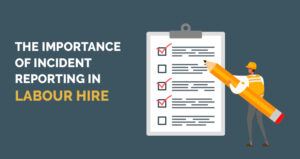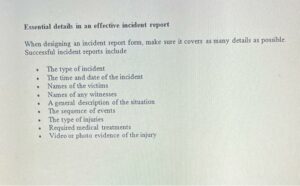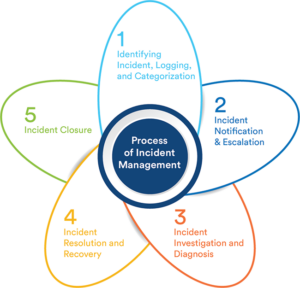As a safety officer, I’ve seen firsthand the power of a well-documented incident log. Capturing details like the “when” and “where” helps us piece together the puzzle and ensure that nothing gets missed.
Information that should be documented in an incident log includes the date, time, location, clear description, individuals involved, and response actions taken.
Searching for answer about “what information should be documented in an incident log?”. Look no further! In this article, we’ll equip you to document incidents effectively, fostering informed decisions and future prevention.
What Is An Incident Log? – Safeguard Your Organization!
An incident log is a comprehensive record of events that occur within your organization, encompassing everything from minor mishaps to critical incidents.
It serves as a central repository for what information should be documented in an incident log, facilitating effective response, analysis, and prevention of future occurrences.
This is like a historical record, meticulously documenting past events to empower you to learn, adapt, and safeguard your organization. This log provides a detailed account of incidents, serving purposes such as legal documentation, security analysis, and accountability tracking.
What Is The Importance Of Incident Recording? – Ready To Unlock The Power!

Enhanced Learning:
By analyzing incident logs, you gain valuable insights into past events. This empowers you to identify recurring issues, understand root causes, and implement targeted prevention strategies.
Improved Compliance:
Many regulations mandate the documentation of specific incidents. Maintaining a comprehensive incident log ensures compliance with these regulations and facilitates investigations if necessary.
What Are The Optimal Ways to Maintain an Incident Log? – Optimize Effortlessly!
Gone are the days of cumbersome paper trails. Today, numerous digital solutions offer efficient and secure ways to maintain “what information should be documented in an incident log”.
Here are some key considerations:
- Accessibility: The chosen platform is easily accessible to authorized personnel, allowing for timely reporting and review of incidents.
- Security: Data security is paramount. Choose a solution with robust security features to safeguard sensitive information.
- Ease of Use: Opt for a user-friendly platform that simplifies incident reporting and streamlines the logging process, encouraging consistent and accurate documentation.
What Are The Steps Of An Incident Response Plan? – Plan For The Unexpected!
- Incident Identification: Recognize and assess the incident, gathering initial details like its nature, time, and location.
- Incident Categorization: Classify the incident based on its severity, potential impact, and type, allowing for a prioritized response.
- Incident Prioritization: The urgency and potential consequences of the incident to determine the appropriate level of response and resource allocation.
- Incident Response: Implement necessary actions to mitigate the immediate impact of the incident, safeguard people and assets, and prevent further damage.
- Incident Resolution and Closure: Investigate the root cause of the incident, implement corrective measures, and document the entire process for future reference.
Essential Details for Effective Incident Logging – “What Information Should Be Documented In An Incident Log?” Guidelines!

Capture the When and Where:
- Date and Time: Establish the precise timeframe of the incident. This facilitates an accurate timeline, aiding analysis and comparisons.
- Location: Specificity is key. Mention the building, floor, room, or specific equipment involved, providing crucial context.
Craft a Clear and Objective Description:
- Detailed Explanation: Provide a factual account of what happened, avoiding personal opinions or judgment. Include any potential contributing factors like environmental conditions, equipment failure, or human error.
- Impact and Consequences: Describe the extent of any injuries, property damage, business disruptions, or other repercussions resulting from the incident.
Identify Individuals Involved:
- Individuals Involved: List everyone directly or indirectly involved, encompassing victims, perpetrators, and witnesses. Gather names, contact information, and their roles in the incident.
- Witnesses: Include the names and contact information of any individuals who witnessed the incident. Their testimonies can be valuable for investigations and gaining different perspectives.
Who Is Responsible For Maintaining The Incident Log? – Empower Everyone To Contribute!

The responsibility for maintaining an incident log typically falls on individuals with specific safety or risk management duties. This could include:
- Safety Officers
- Risk Management Professionals
- Department Heads
However, encouraging everyone within your organization to report incidents is crucial. This fosters a culture of safety and ensures comprehensive documentation of “what information should be documented in an incident log” for all relevant events.
Best Practices For Maintaining An Incident Log – Aim For Success!
- Standardize the format: Use a consistent format to ensure ease of use and understanding for everyone involved.
- Regularly review and analyze: Analyze incident logs to identify trends, patterns, and potential areas for improvement in your “what information should be documented in an incident log” practices.
- Update and maintain the log: The log is kept up-to-date with the latest information.
- Conduct training: Train personnel on proper incident reporting and documentation procedures.
FAQs:
1. When to Document Incidents and what information should be documented in an incident log?
Some specific situations that warrant incident documentation include workplace
accidents, safety hazards, equipment malfunctions, security breaches, and customer complaints.
2. Who Should Access and what information should be documented in an incident log?
Access to the incident log should be restricted to authorized personnel with a legitimate need to review the information. This could include management, safety officers, investigators, and relevant department personnel.
3. Do I need to include personal opinions or judgments in the incident log?
No, The incident log should be a factual account of what happened, avoiding personal opinions or biases. Focus on objective details and stick to the facts.
4. How much detail should I include in the description of the incident?
Be as detailed as possible while maintaining clarity. Describe the incident chronologically, including any relevant information that helps paint a clear picture of what transpired and the context surrounding it.
Conclusion About “What Information Should Be Documented In An Incident Log”:
Effectively documenting an incident log boils down to capturing crucial details. This includes the when, where, and what of the incident, along with individuals involved, response actions taken, and any relevant visuals.





